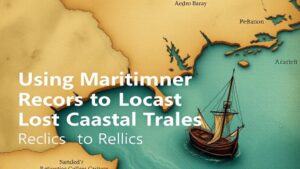How AI Identifies Stratigraphic Layers Likely to Contain Fossils
How AI Identifies Stratigraphic Layers Likely to Contain Fossils
The identification of stratigraphic layers containing fossils is a crucial aspect of paleontology, geology, and environmental science. Traditional methods of fossil detection often involve labor-intensive fieldwork and expertise in stratigraphy. But, advancements in artificial intelligence (AI) are revolutionizing this field by providing powerful tools for identifying and classifying these layers more efficiently. This article explores the methodologies employed by AI to assess stratigraphic layers, the data utilized, and the implications of these technologies for fossil identification.
Overview of Stratigraphic Layers
Stratigraphy is the study of rock layers (strata) and layering (stratification), which forms the foundation for understanding Earths history. Fossils are typically found within sedimentary rock, which forms under specific conditions conducive for the preservation of biological traces. The identification of these layers requires understanding geological time scales and processes, including:
- Lithology: The physical characteristics of the rock.
- Fossil content: The type and quantity of fossils present.
- Chronostratigraphy: The age of the rock layers.
To identify promising stratigraphic layers for fossil excavation, AI leverages data from various sources, which may include satellite imagery, geophysical surveys, and geological maps.
Artificial Intelligence Techniques
AI employs several techniques to analyze geological data efficiently. e include:
- Machine Learning: Algorithms are trained on datasets containing information about known fossil locations and geologic conditions. For example, a study published in 2020 used machine learning to predict fossil-rich strata in Badlands National Park, South Dakota, with an accuracy of 85%.
- Neural Networks: Deep learning models can process complex datasets, identifying patterns that may not be immediately visible. This method was notably used in an analysis of sediment core samples, helping researchers identify specific layers historically known to contain Eocene fossils.
- Remote Sensing: AI can analyze satellite and aerial imagery to detect surface geological features indicating fossil-rich strata. This technique was utilized effectively in the Atacama Desert region of Chile.
Data Sources for AI Analysis
The effectiveness of AI in identifying fossil-bearing layers relies heavily on the quality and diversity of the data used for training. Common data sources include:
- Geological Surveys: Data from national geological databases, such as the United States Geological Survey (USGS), provide comprehensive geological maps and data on stratigraphy.
- Geophysical Data: This includes seismic reflection and ground-penetrating radar data, which helps visualize subsurface structures.
- Historical Fossil Records: Databases that catalog fossil finds and their locations greatly enhance AI models accuracy.
Case Studies and Applications
Several successful case studies illustrate the application of AI in identifying stratigraphic layers with fossil potential:
- The Natural History Museum London: Researchers developed a machine learning tool that analyzed numerous historical datasets to successfully predict the locations of previously undiscovered dinosaur fossils in the Jurassic strata of England.
- University of California, Berkeley: A team employed AI to process satellite images of the sedimentary geology in Mongolia, significantly improving targeting strategies for herbivorous dinosaur fossils thought to exist in the region.
Challenges and Limitations
While the integration of AI in fossil identification presents many advantages, challenges remain:
- Data Availability: Access to comprehensive datasets is often limited, which may reduce AI models training efficacy.
- Interpretation of Results: The need for geological expertise persists, as AI outputs require verification by trained paleontologists.
- Technological Constraints: Not all fossil-rich areas are easily accessible for data collection, necessitating innovative solutions to gather datasets.
Future Directions and Implications
The future of AI in stratigraphy and fossil discovery is promising. Ongoing developments in computational power and machine learning algorithms could lead to more advanced predictive models. Plus, interdisciplinary collaboration among geologists, paleontologists, and data scientists is essential to harness AIs full potential.
In summary, the integration of AI into fossil identification processes represents a significant leap forward for geology and paleontology. By analyzing diverse datasets and employing sophisticated methodologies, AI can effectively predict stratigraphic layers that are more likely to contain fossils, ultimately guiding research efforts and excavation projects worldwide.
Actionable Takeaways
- Researchers should prioritize interdisciplinary collaboration to enhance data quality and model accuracy.
- Investment in comprehensive geological databases will support machine learning initiatives.
- Field teams must continue to validate AI predictions with geological expertise to ensure reliable outcomes.



